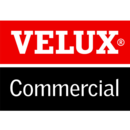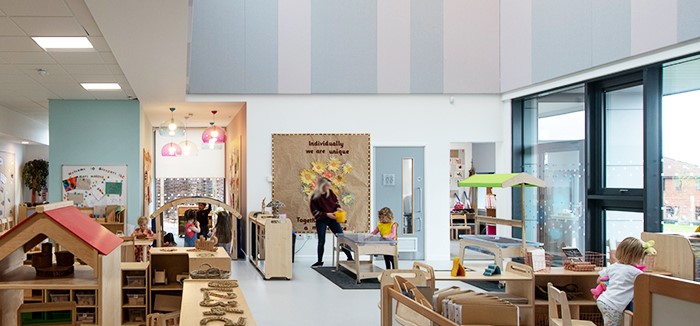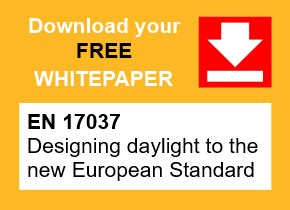Types of building EN 17037 applies to
Contents |
[edit] Introduction
EN 17037 Daylight in buildings was published at the end of 2018 and is the first unified standard, applicable Europe-wide, that deals exclusively with the design for and provision of daylight within commercial buildings and residential dwellings.
EN 17037 can be applied to any building types from commercial buildings such as factories and hospitals to residential dwellings including houses and apartments. The areas of design covered by EN 17037 and the flexibility to decide what performance level is achieved, as long as it meets the minimum recommendation, means internal spaces can be designed to suit intended activities.
The standard is not confined to new buildings. For the renovation and/or conversion of an existing building, EN 17037 provides the methods to assess existing openings against the proposed use and inform any changes to the building fabric accordingly to meet the new European standard.
[edit] Does EN 17037 refer to specific building types?
Section 5.3 of EN 17037 defines assessment of exposure to sunlight and is the only section of the European standard to offer building-specific guidance. It states that at least one habitable space in hospital patient rooms, dwellings and nursery playrooms should provide the minimum performance level for sunlight exposure.
Whilst access to sunlight is desirable, over-exposure can be detrimental to health and wellbeing through excessive solar gains creating an uncomfortable increased internal temperature. This unique building-specific guidance within the standard is recognition that in certain situations building users need a ‘calmer’ space.
[edit] Are any specific levels of illuminance required by EN 17037?
EN 17037 does not specify illuminance levels for individual tasks or uses of a building. The standard instead offers levels of illuminance in terms of the minimum, medium and high-performance levels.
The minimum 300-lux level is based on several studies and has been described as the suitable minimum illumination requirement for prolonged office work and at which the likelihood of switching on electric lighting is low. It is important to note that design levels for artificial lighting also use a 300-lux minimum value.
This gives the specifier or designer the freedom to aim for higher levels where specified by guidance particular to that building type or where certain building uses require it.
Visit the VELUX Commercial website for further guidance on EN 17037.
See also:
VELUX Commercial specialises in designing and manufacturing daylight solutions for commercial and public buildings. Contact us to find out how our products can improve daylight provision in your next project.
[edit] Related articles on Designing Buildings
- Artificial lighting.
- Aspects of daylighting design covered by EN 17037.
- Daylight.
- Daylight factor.
- Daylit space.
- Designing daylight solutions for commercial buildings.
- EN 17037 Daylight in buildings.
- Glare.
- Health and wellbeing impacts of natural and artificial lighting.
- Lighting.
- Lighting and health infographic.
- Lighting designer.
- Lighting and offices.
- Rooflights.
- Site layout planning for daylight and sunlight.
- Solar gain.
- Types of lighting.
- Windows.
Featured articles and news
Welsh Skills Body (Medr) launches ambitious plan
The new skills body brings together funding and regulation of tertiary education and research for the devolved nation.
Paul Gandy FCIOB announced as next CIOB President
Former Tilbury Douglas CEO takes helm.
UK Infrastructure: A 10 Year Strategy. In brief with reactions
With the National Infrastructure and Service Transformation Authority (NISTA).
Ebenezer Howard: inventor of the garden city. Book review.
The Grenfell Tower fire, eight years on
A time to pause and reflect as Dubai tower block fire reported just before anniversary.
Airtightness Topic Guide BSRIA TG 27/2025
Explaining the basics of airtightness, what it is, why it's important, when it's required and how it's carried out.
Construction contract awards hit lowest point of 2025
Plummeting for second consecutive month, intensifying concerns for housing and infrastructure goals.
Understanding Mental Health in the Built Environment 2025
Examining the state of mental health in construction, shedding light on levels of stress, anxiety and depression.
The benefits of engaging with insulation manufacturers
When considering ground floor constructions.
Lighting Industry endorses Blueprint for Electrification
The Lighting Industry Association fully supports the ECA Blueprint as a timely, urgent call to action.
BSRIA Sentinel Clerk of Works Training Case Study
Strengthening expertise to enhance service delivery with integrated cutting-edge industry knowledge.
Impact report from the Supply Chain Sustainability School
Free sustainability skills, training and support delivered to thousands of UK companies to help cut carbon.
The Building Safety Forum at the Installershow 2025
With speakers confirmed for 24 June as part of Building Safety Week.
The UK’s largest air pollution campaign.
Future Homes Standard, now includes solar, but what else?
Will the new standard, due to in the Autumn, go far enough in terms of performance ?
BSRIA Briefing: Cleaner Air, Better tomorrow
A look back at issues relating to inside and outside air quality, discussed during the BSRIA briefing in 2023.
Restoring Abbotsford's hothouse
Bringing the writer Walter Scott's garden to life.
Reflections on the spending review with CIAT.


























